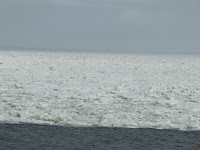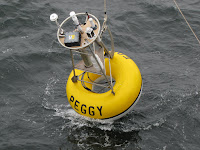
 I was able to spend time on the bridge as we pulled into port. It was great seeing the officers work together to get us to Dutch Harbor safely. Today was my last night in Dutch Harbor. Amber and I spent some time running errands and later cutting out fish out of fire hose and spray painting them for the local middle school's tour of the ship the next day. There are not a lot of options while in port, so we headed to the Airport. I was able to see the Coast Guard helicopter practicing maneuvers. We made our way to the Grand Aleutian Hotel, and then to the UniSea for some pool and pizza. Ms. Miller is the middle school science teacher on Dutch, and she took us on a bumpy but beautiful ride to see the wild horses. We ended
I was able to spend time on the bridge as we pulled into port. It was great seeing the officers work together to get us to Dutch Harbor safely. Today was my last night in Dutch Harbor. Amber and I spent some time running errands and later cutting out fish out of fire hose and spray painting them for the local middle school's tour of the ship the next day. There are not a lot of options while in port, so we headed to the Airport. I was able to see the Coast Guard helicopter practicing maneuvers. We made our way to the Grand Aleutian Hotel, and then to the UniSea for some pool and pizza. Ms. Miller is the middle school science teacher on Dutch, and she took us on a bumpy but beautiful ride to see the wild horses. We ended  up having a bonfire on the beach thanks to Amber’s coordination, not to mention all of the people that it took to get the fire started. It ended up being a fantastic evening at the end of our trip together! I enjoyed my experiences and everything I learned on the ship. I look forward to bringing back what I have learned into my classroom.
up having a bonfire on the beach thanks to Amber’s coordination, not to mention all of the people that it took to get the fire started. It ended up being a fantastic evening at the end of our trip together! I enjoyed my experiences and everything I learned on the ship. I look forward to bringing back what I have learned into my classroom.
Thank you and goodbye Oscar Dyson!

























